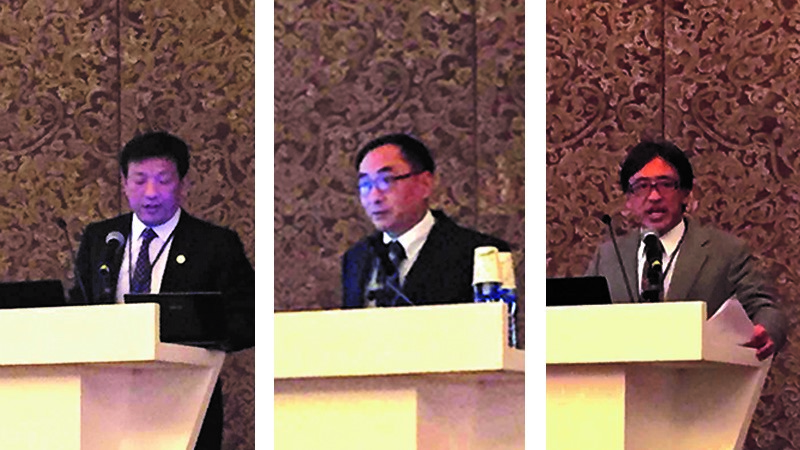As one of the serial activities to celebrate the 20th anniversary of Medical School of Xiamen University, hosted by Asia Dry Eye Society China Branch and organized by Eye Institute of Xiamen University, the 5th annual Dry Eye Summit was grandly held on November 18-19, 2016, in Xiamen. More than 70 experts from 10 Asian countries and regions attended the conference. At 15:00 on the 18th, the meeting officially started. Chairman of Asia Dry Eye Society, Head of the Ophthalmology Department in Keio University, Japan, famous expert of cornea and ocular surface disease, Professor Kazuo Tsubota presided over the meeting; Vice Chairman of Asia Dry Eye Society and Chairman for China branch, Dean of the Medical School of Xiamen University, Director of Eye Institute Professor, Zuguo Liu made a speech for the meeting.

Asia Dry Eye Society is an important academic organization in the field of dry eye research. The association implements a strict membership access system. Currently, there are 81 members in Asia and 21 members in China. Each year, the critical scientific issues in the basic and clinical research, as well as treatments of dry eye are discussed during the meeting. This is the first time the annual summit was held in China. In the meeting, vice President of Xiamen University, Professor Jiahuai Han was invited for the keynote speech. Professor Zuguo Liu and Professor Wei Li made invited talks, respectively.

In the morning of Nov. 19th, the 2nd Chinese Dry Eye Congress was held in conjunction with the annual summit of Asia Dry Eye Society. Nearly 600 experts and physicians around the country attended the conference. The conference took “Focus on clinics, collaborative innovation” as its theme, and it includes 11 continuing education courses, 23 lectures, 4 satellite meetings, 4 difficult case discussions, "expert face-to-face" breakfast meeting, new product introduction meeting and so on. Overall, the rich contents impressed each attendant. At the same time, the conference was broadcasted through internet by Yixin Eye/Dry Eye net, which attracted nearly 4,000 physicians to join the conference online. At noon on the 20th, the conference completed successfully.
Dry eye is a common and frequently-occurring disease in modern society. At present, there are more than 200 million patients with dry eye disease in China, which is the largest group of patients in eye clinic and consumes a lot of medical resources. As the head of Asia Dry Eye Society China branch, Eye Institute of Xiamen University has a strong team in both the basic and clinical research of dry eye, which has made a large number of innovative achievements in the field of dry eye animal model setup, pathogenesis elucidation, and anti-dry eye drug developments, and made great contributions to China's dry eye research and continuing medical education. In 2013, commissioned by Corneal Group of Chinese Medical Association Ophthalmology Branch, Professor Zuguo Liu led a group of specialists to draft the "Expert consensus of diagnosis and treatment of dry eye", which became the standard of dry eye clinical diagnosis and treatment in China.
In addition to give full play to the leading role of scientific institutions in the research aspect, Eye Institute of Xiamen University also actively promotes the establishments of "Chinese Dry Eye Alliance". Based on China Dry Eye Association, relying on scientific strength of Eye Institute of Xiamen University in dry eye field, combining major ophthalmic pharmaceutical companies, clinical centers, ophthalmic research institutions, the alliance develops the formation of technology transfer, commissioned projects, joint research and other cooperation methods in domestic, and promotes the development of multi-center research and clinical transformation of scientific research results. At present, Eye Institute of Xiamen University has formed a good four-wheel drive pattern by basic research, translational research, clinical application and industrial development in the field of dry eye.
(Eye Institute of Xiamen University Yanzi Wang, Zhan Gao)


